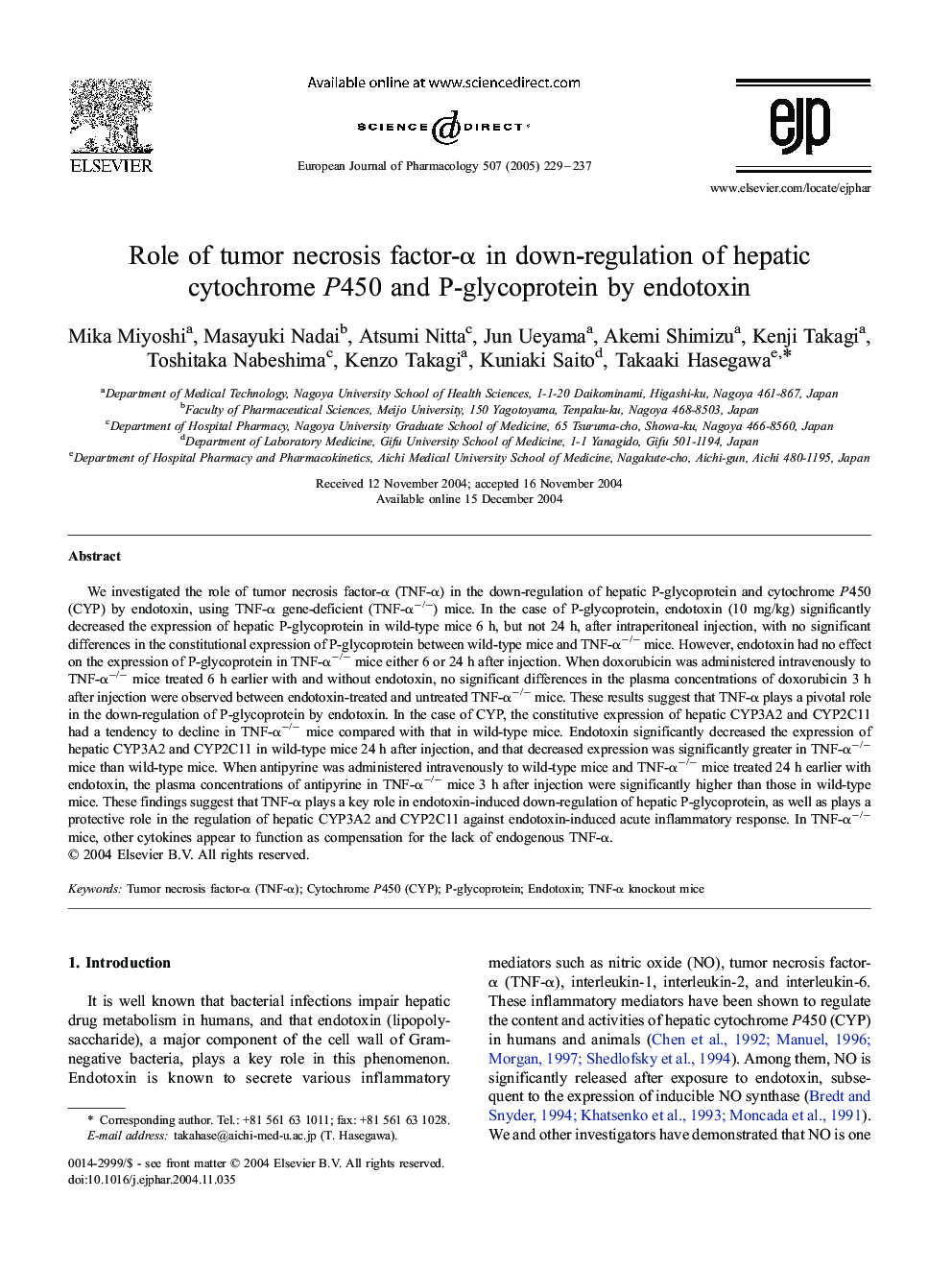| Article ID | Journal | Published Year | Pages | File Type |
|---|---|---|---|---|
| 9921575 | European Journal of Pharmacology | 2005 | 9 Pages |
Abstract
We investigated the role of tumor necrosis factor-α (TNF-α) in the down-regulation of hepatic P-glycoprotein and cytochrome P450 (CYP) by endotoxin, using TNF-α gene-deficient (TNF-αâ/â) mice. In the case of P-glycoprotein, endotoxin (10 mg/kg) significantly decreased the expression of hepatic P-glycoprotein in wild-type mice 6 h, but not 24 h, after intraperitoneal injection, with no significant differences in the constitutional expression of P-glycoprotein between wild-type mice and TNF-αâ/â mice. However, endotoxin had no effect on the expression of P-glycoprotein in TNF-αâ/â mice either 6 or 24 h after injection. When doxorubicin was administered intravenously to TNF-αâ/â mice treated 6 h earlier with and without endotoxin, no significant differences in the plasma concentrations of doxorubicin 3 h after injection were observed between endotoxin-treated and untreated TNF-αâ/â mice. These results suggest that TNF-α plays a pivotal role in the down-regulation of P-glycoprotein by endotoxin. In the case of CYP, the constitutive expression of hepatic CYP3A2 and CYP2C11 had a tendency to decline in TNF-αâ/â mice compared with that in wild-type mice. Endotoxin significantly decreased the expression of hepatic CYP3A2 and CYP2C11 in wild-type mice 24 h after injection, and that decreased expression was significantly greater in TNF-αâ/â mice than wild-type mice. When antipyrine was administered intravenously to wild-type mice and TNF-αâ/â mice treated 24 h earlier with endotoxin, the plasma concentrations of antipyrine in TNF-αâ/â mice 3 h after injection were significantly higher than those in wild-type mice. These findings suggest that TNF-α plays a key role in endotoxin-induced down-regulation of hepatic P-glycoprotein, as well as plays a protective role in the regulation of hepatic CYP3A2 and CYP2C11 against endotoxin-induced acute inflammatory response. In TNF-αâ/â mice, other cytokines appear to function as compensation for the lack of endogenous TNF-α.
Related Topics
Life Sciences
Neuroscience
Cellular and Molecular Neuroscience
Authors
Mika Miyoshi, Masayuki Nadai, Atsumi Nitta, Jun Ueyama, Akemi Shimizu, Kenji Takagi, Toshitaka Nabeshima, Kenzo Takagi, Kuniaki Saito, Takaaki Hasegawa,
